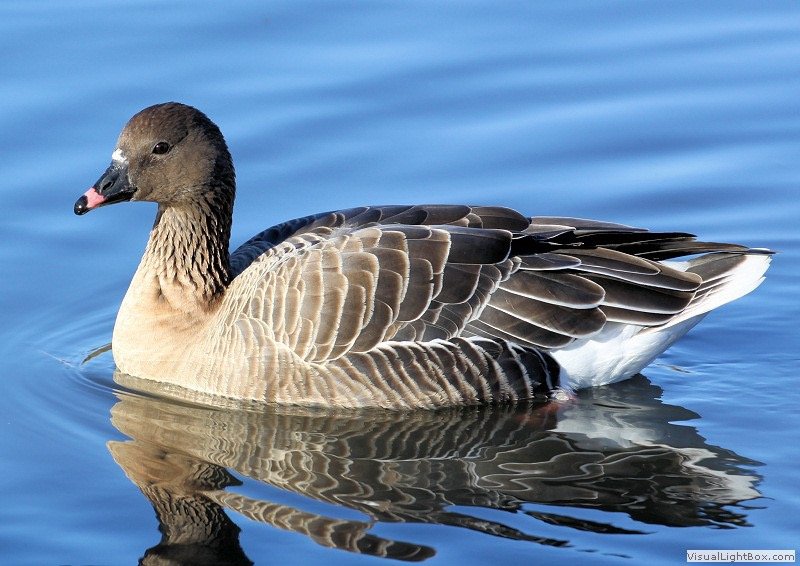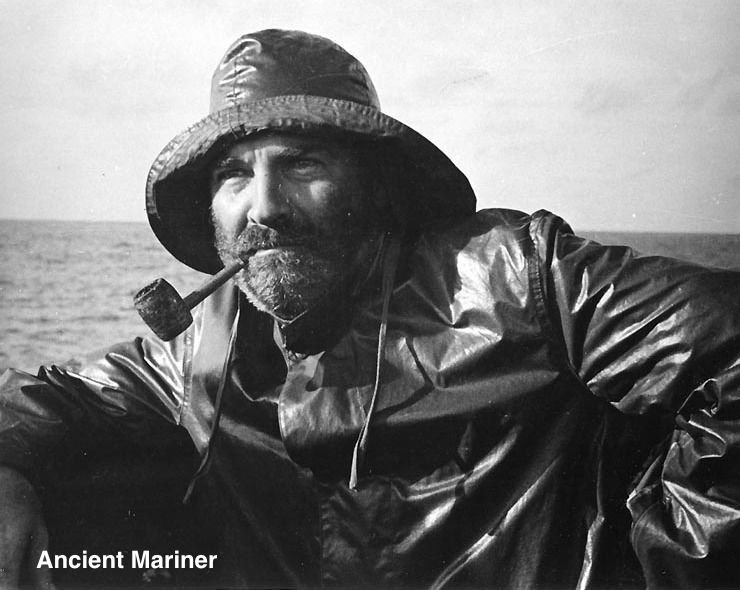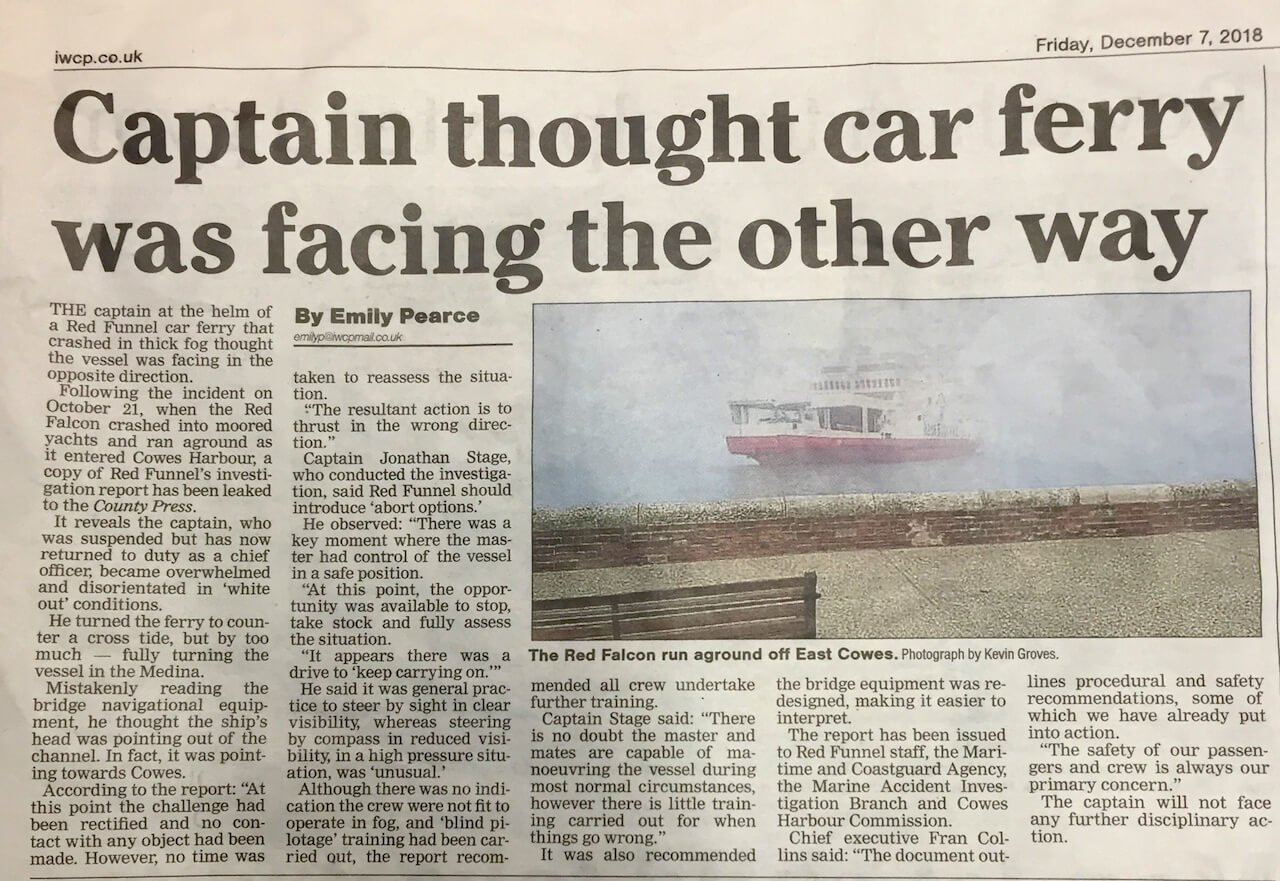The Wreck of the Greylag
“Aviation in itself is not inherently dangerous. But to an even greater degree than the sea, it is terribly unforgiving of carelessness, incapacity or neglect.”
Above is the well known statement by Captain Alfred Gilmer Lamplugh C.B.E., a much respected early aviator and contributor to civilian flight safety, but we shouldn’t be too pedantic about the difference. The wise words, displayed in flying places the world over, including aircraft carriers, imply the similarities in going down to the sea in ships, and taking to the air. To some extent differing energy levels are an explanation of his risk judgment - but, in essence, the same care and judgment are required for success in both forms of travel.
Many professional pilots also like to go sailing. This picture of the future yacht Greylag owner features cadet Minchin rejoining the Hamble circuit in a College of Air Training Chipmunk in 1961. I had accompanied him on a visit to Kidlington to view a Jaguar XK120 which an instructor there wished to sell. This classic car found its way to Hamble, so perhaps Air and Sea can be joined by Road as a third example of man’s fascination with travel - given his limitations in all three.
There are many common factors at work here, and the greylag goose is a perfect example of those creatures truly at home in two elements - water and air - with a minimum of human helpful technology which can also confuse. Many of them fly great distances with great reliability, but they seldom challenge the weather or their own ability. They demonstrate the true professional’s skill of clear judgment and patience. If it doesn’t look good, wait until it does.
This is a story of overload, conflict and confusion inhibiting the ability to function satisfactorily, not helped by the combined influences of tradition, digital technology and shareholder satisfaction. Waterfowl and seabirds seldom have this problem, they keep it simple and stick to the basics. The unlucky greylag in this case is blameless.
What happened?
A 4,000 ton, drive-through Raptor car ferry encountered thickening fog as it approached its berth at Cowes. Steering had become increasingly erratic as visibility reduced, because the helmsman of this rudderless and flat-bottomed vessel had to rely increasingly on a digital heading readout (rather than outside scenery or the traditional compass rose appearance).
The captain decided to take over the steering process in these restricted waters, and confusion reigned on the bridge when BRM (wet CRM) communication broke down as he became preoccupied with his predicament. Ex-helmsman, lookouts and the Chief (First) Officer were not sure what was happening, and the captain was unaware that the ship had turned itself through 200 degrees during the changeover. It was now pointed east at the shallow water on the opposite side of the inlet. This is where yachts were moored. He abandoned the attempt to dock and decided to return to the Solent, so called for power, with mental orientation reversed. The ship then gained way towards the shallows and the moored Greylag which it cut in half, then came to a halt as it ran aground in the mud. It suffered no damage or injuries. The two ends of the unoccupied Greylag sank immediately.
More details
The official report, published 16 months later, makes fascinating reading for professional air transport pilots, and a pdf copy will follow, but the story immediately did the rounds of this Hampshire Island, famous for its homegrown agricultural, royal and nautical histories. First we should read one such rustic version, typical of the tales spun by ancient mariners on winter evenings in pub, cottage, or on a bench outside in the summer.
To an aviating professional with yachting experience but little knowledge of commercial shipping this report is essential reading. It covers the challenges presented by technology, tradition, recency, qualification validity, individual standards: all set against an imperative of fiscal economy. It works on a nice day . . usually . . .
The title photo of this document shows the dashcam scene over the Red Falcon’s Southampton bow, which doubles as its Cowes stern. This alone should suggest the importance of operating crew clarity about what’s happening at critical times.
At sea this principle is called BRM, Bridge Resource Management: CRM without the up and down stuff. Did the Titanic already have BRM? Perhaps, although we were told that NASA invented CRM for space teams. Allied bomber crews of WW2 certainly developed this teamwork - rapidly.
But, returning to the pushmepullyou ferry, this captain (master in the merchant marine) found himself in a nightmare of circumstance one would not wish on anyone.
Of interest are the ferry’s ingenious propulsion, steering and manoeuvring system, the ship’s double-ended, symmetrical operating function and its two mirror-image flight decks operating consoles.
Notes
Magnetic Compass: This photograph shows the actual nautical compass mounted on the floor of the first navigable Wright Flyer.
Greylag Goose: This bird is the definitive general purpose goose. First domesticated in 1360BC it is directly related to today’s familiar farmyard example, though the still widespread wild version looks better, stronger and more business-like. Fit for purpose: competent, sociable yet decisive where necessary.
College of Air Training
My logbook does not include the 1961 Hamble/Kidlington/Hamble visit, so as back seat photographer I must have been safety pilot for an instrument flying cross country exercise.
More pictures
All that was left
Boating
The word is used advisedly, and is probably considered unprofessional, but it was made famous by Katherine Hepburn as Rose Sayer in The African Queen, to Charlie Alnutt’s disgust. Whatever you call it, messing about in any boat requires the necessary quality of captaincy - excellently demonstrated by Humphrey Bogart, rough and ready as he appeared to be. As with all flight, getting away with it needs more than luck and electronics.
Conclusion
An official report tells us the facts as revealed or reported, but a minimum about the people. As readers of a story of fallible humans we would like to know more about them; their lives, characters, the reasons why. The story of this ship’s master’s changing circumstances leading to this predicament have no details, but what novel or play could result!











